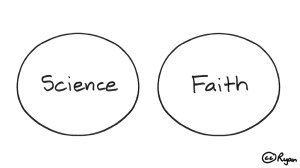When we consider the narrative framework for the biblical story, a handful of questions come immediately to mind. Who is the Sender, Object and Receiver in the biblical story? Who is the Agent, the Opponent and the Helper?
We might be inclined, given the way we’ve often told the biblical story, particularly the gospel story, to put it something like this: God sent Jesus (the object) to the world (receiver). No doubt many of us who grew up in an Evangelical church heard it something like this implicitly, if not explicitly.
If we did understand this to be the narrative structure of Scripture, what is the role of humanity? We are simply the passive receivers. We play no active role. Pastorally, at least, this kind of worldview becomes problematic if you want your congregation to do anything. What is there to do? God has done it all through Jesus.
And if this is the proper framework for the biblical story, who is the agent, the opponent or the helper? We’ve got God giving Jesus to the world—a perfectly biblical notion (Jn 3:16)—but is there anything working against God the Father? Is there anything at risk? In other words, where is the actual drama?
Further, with a brief narrative like God sent Jesus to the sinful world, we’ve entirely left out two-thirds of the Bible itself. This narrative has no real use for an Old Testament, except, perhaps, to highlight the necessity of Jesus in the first place. But that makes the Bible read like one of those old Russian novels (good as they are) that spend 500 pages on character sketches and background before anything substantive actually drives the plot forward.
No, the Bible is richer than this. God is more dynamic than this. The stakes are higher than this.
Perhaps, if we’re to sketch the narrative skeleton of Scripture, we can begin at the beginning. What kind of plat does the creation narrative set up?
People have read Genesis 1-2 in all sorts of way, with all sorts of conclusions drawn. I rather like certain aspects of John H. Walton’s interpretation in his recent works, The Lost World of Genesis One and The Lost World of Adam and Eve. Walton is keen to place the stories of Genesis 1-3 into its ancient context. That is, if the ancient Hebrews who originated these texts were, in fact ancient people living in the Near East, shouldn’t we expect them to think like other ancient Near Eastern (ANE) peoples, even if we also expect some key differences? In any event, we should not expect the ancient Hebrews to think just like modern (or post-modern, or post-post-modern) Western people in the 21st century.
So from Walton’s perspective, God is trying to do something very specific in the act of creation. In fact, we could say that the Creator primarily does two things in Genesis 1-2.
First, God is bringing order to the world. He is establishing peace in the midst of chaos. Consider how the story starts: “Now the earth was formless and empty…” (Genesis 1:2, NIV). Careful words studies of the Hebrew behind “formless and empty” (tohu and bohu) suggests that the implication is not a cosmic nothingness, but rather a chaotic, uninhabitable condition (for a quick analysis, you can see chapter 4 of Walton’s Lost World of Genesis One). Over the first six days of creation, then, God is reversing that chaotic and destructive state.
The second element to God’s creative activities is that he is establishing a temple for himself. This may be less obvious at first glance, but it’s perhaps the most clear when Genesis is compared with other ANE creation stories. For Walton, any ANE person, including the ancient Hebrews, hearing a story about a seven-day creation would have immediately communicated a profound fact: This is a temple creation story (Genesis One, 88-91).
Further, says Walton, when God rests on day seven, he’s resting in the way we might after we’ve moved into a new home and unpacked all our boxes. He’s taking up residence, not taking a nap (Genesis One, 71-76).
Lastly, the Garden of Eden, as so many scholars have recognized, greatly resembles the later tabernacle and temple still in Israel’s future. Eden itself is a natural temple for the Creator (Adam and Eve, 116-7).
What does all this tell us about the potential storyline for the biblical narrative? It begins to hint at God’s purpose in the story. In other words, we’ve found our Sender, Object and Receiver.
Actually, we’re quite close to where we began this post. God is indeed the Sender. The world is receiving something from him. But what is the Object? Genesis 1 makes no explicit reference to Christ, so I don’t think we can slot him in. What is being delivered to the world? Order, peace, shalom, a state of flourishing—in a word, life.
But I suspect even this Object (life, peace, order) ought to be subsumed within something even greater, something implied in the construction of a natural temple.
The temple in Eden is there in the midst of creation in order to house God, his presence, his glory. Consider, as a parallel, what happens when, later, Moses completes construction of the tabernacle, a mobile temple (Ex 40:34-38), or when Solomon consecrates the temple (1 Kgs 8:10-11). God’s glory rushes in to fill the place. I don’t think it’s a stretch to think that the Garden of Eden, as a natural temple, would house God’s glory in the same way the Holy of Holies would.

And it’s from that glory, from God’s presence, from that temple, that the life, peace and order emit.
So now we have the top portion of our narrative diagram. God is attempting to send his glory (and thereby life) into the world.
But we’re not done, of course. There is a bottom half to complete. From here our drama comes.

